Story by Louis Galanos | Photos as credited

By March of 1961 the controversy surrounding the poorly reviewed 1960 Sebring 12 hour race was forgotten by most. Gone were any threats or boycotts by factory Ferrari and Porsche over the Sebring requirement, in 1960, that all entrants use Amoco gasoline. The Sebring track’s major sponsor, the American Oil Company (Amoco), had withdrawn its sponsorship of the race after the Fédération Internationale de l’Automobile (FIA) dictated that Sebring promoter Alec Ulmann could not enter into any exclusive agreements with companies, like Amoco, and require entrants to use their products. Ulmann protested to the FIA citing that they allowed such an exclusive arrangement for the 24 Hours of Le Mans but the FIA ignored Mr. Ulmann’s argument.
Losing your major sponsor didn’t deter Alec Ulmann because he was a genius when it came to marketing and promotion and it didn’t take him long to find another sponsor in the form of Italian airline Alitalia. Not only did Alitalia provide money for the purse and a beautiful sterling silver trophy but they were able to transport many of the European competitors to the East Coast of the United States where they could then arrange for transportation to Florida.
The 1961 Sebring 12 Hours race would be the tenth anniversary of what many now called “The World’s Greatest 12-hour Endurance Race.” Both Alec and wife, Mary Ulmann, were going all out in anticipation of a large crowd of race fans and attendance by a “who’s who” of New York and Palm Beach society along with a smattering of Florida’s political big wigs. Later writers would characterize this moment in time as part of the golden era in sports car racing in America.
One of Mary’s responsibilities was to see that all the invited guests were well treated and the Automobile Race Club of Florida (A.R.C.F.) hospitality tent in the paddock was the place to find gourmet food, Florida delicacies like gator tail and oysters all washed down by copious amounts of expensive champagne. There was even a fully stocked bar where ARCF members and invited guests could find a drink long after drinking establishments outside the track were closed. More than one guest would spend the entire race in the hospitality tent eating, drinking and smoking cigarettes.
In the previous ten years Sebring had built up a national and international following as well as a host of sponsorships by both national and international companies. For those involved in motorsports Sebring was the place to be. Going to Sebring and sunny Florida in March was also a good excuse to get away from the frozen regions of the U.S. and Europe and Florida complied with bright sun and mild temperatures during the entire week before the race. More than one participant at Sebring in 1961 returned home with a sun burn.
The 1961 race at Sebring was getting a lot of attention in the international motorsports press because it was the season opener for the International Manufacturer’s Championship that was sanctioned by the F.I.A. and Porsche would be returning with seven entries as they hoped to repeat their overall win from the previous year.
Ferrari, which won in 1956, ’58 and ’59 would be there to challenge Porsche with thirteen entries including a radically new rear-engined Ferrari Dino 246 SP to be driven by Richie Ginther and Count Wolfgang von Trips. One automotive magazine described the all-new rear engined Ferrari as, “…ugly, brutish and blindingly fast with almost unbelievable road-holding.”

The car’s “ugliness” seems to be a direct result of wind tunnel testing by Ferrari which by all accounts was a first for them. The testing produced a rather large front nose on the car and a hump at the back. During the first day of practice driver Richie Ginther clocked a record 3:14 lap which broke Stirling Moss’s record run in 1960 by three seconds and set the standard for the day. Many tried to equal it including Moss in his Birdcage Maserati but all were unable to do so. When asked about this Camoradi team manager Lloyd “Lucky” Casner said, “We can break the record lap time whenever we want to.”
The team of six Maserati Tipo entries were there to challenge the Ferraris but few gave them any chance at winning because not a single Maserati finished in 1960 and two of the cars at Sebring in ’61 were new unraced rear-engined Type 63’s. Chief Camoradi mechanic Lee Lilley said, “We really don’t know what we have here. The Maserati hasn’t been tested enough to give us much idea but we do know that she has great speed.”




1961 Sebring 12 Hours – Race Profile Page Two
While the talk in the automotive press might have been about the Germans verses the Italians among the rank and file entering the gates on race day the talk was about the six Corvettes that were entered in the race and maybe this year would be their year. While Porsche, Ferrari and Maserati were fielding factory teams the Corvette entries were all privateers without any factory support from General Motors (GM).
GM could not overtly help the Corvette entries because in June of 1957 they joined the other members of the Automobile Manufacturers Association in a gentleman’s agreement to discontinue any factory support for autoracing and motorsports. This agreement came about following the tragedy at the 1955 24 Hours of Le Mans where 83 spectators were killed and hundreds injured. However, there were some at GM who turned a blind eye when a lot of high performance goodies made their way out the factory back door and to some of the racers. Officially, however, factory support was forbidden.
The Corvettes were always welcome at Sebring because they helped raise the interest in the race, although they had never seriously threatened to take the victory away from the European entries. However, in the mind of Vette fans, this could be the year. Prior to 1961 the last time an American made car had won at Sebring was 1953 when a Cunningham built C4R took overall honors.

Besides rooting for their favorite marque many race fans would also be rooting for their favorite driver and Sebring in ’61 provided some of the biggest names in the business including five former Sebring winners. One of those was American favorite Dan Gurney with his movie star looks. Also from Southern California was Richie Ginther and Phil Hill and from Texas oilmen Jim Hall and Hap Sharp. Sebring veteran Briggs Cunningham would also be there along with popular woman driver Denise McCluggage. Englishmen Stirling Moss and Graham Hill seemed to attract the ladies along with the diminutive duo of Rodriguez brothers Pedro, 21 and Ricardo, 19. The ladies thought they were “cute.” In the pits momma and papa Rodriguez were there keeping an eye on the boys and supposedly protecting them from predatory females.







1961 Sebring 12 Hours – Race Profile Page Three
The Rodriguez brothers had been racing at Sebring for several years. The first time they raced at Sebring they were too young to legally drive in Florida but could drive a race car because they had obtained an F.I.A. race license in their native Mexico. Ironically in 1961 Stirling Moss could not drive himself to the track because his British driving license had been suspended for one year for dangerous driving in his native England. Like the Rodriguez brothers, when they were young, he had to be chauffeured to the track.
Belgian Olivier Gendebien arrived at the track for practice in a foul mood. It seems that he had been stopped for speeding on his way south and had to pay a $150.00 speeding fine before he could continue on his way. To keep that in perspective, $150.00 in 1961 is the equal of almost $1200.00 today. Gendebien would be co-driving a factory Ferrari 250 Testa Rossa 61 with Phil Hill.
Adding an air of nobility to this event would be Count Wolfgang von Trips of Germany. His full name was Wolfgang Alexander Albert Eduard Maximilian Reichsgraf Berghe von Trips. Some in the pits at Sebring in ’61 nicknamed him Wolfgang von Crash because of the numerous accidents he had in racing. Tragically von Trips would die at the Italian Grand Prix at Monza six months after Sebring when his Ferrari went off the track and into a barrier. Not only did he die but fifteen spectators were also killed. Some believed his fate to die young had been determined since the plane he was to take to the U.S.A., following the Italian Grand Prix, crashed in Scotland.




1961 Sebring 12 Hours – Race Profile Page Four
In 1961 at Sebring your place on the starting grid was determined by engine size and not your qualification speed. However, all entrants were required to practice a minimum number of laps with some of those coming during night practice. One car showing up for practice was a Ferrari GT with racing numbers on the hood and both doors. Some astute observer checked the entry list and found that the car was an illegal entry and the driver and car were escorted from the track. Interesting enough the fellow who did this pulled the same stunt in 1960 by parking his little Fiat at the end of the grid then joined the race until the folks in timing and scoring realized he wasn’t on their entry lists and the car was black flagged and escorted from the track.
Before or after official practice times the area in front of the start finish was often quiet as teams worked on their cars or set up their pit area with tires, tools and other equipment needed for the race. It was during these times that one could see some of the drivers practicing their Le Mans style run to their car and the tricky leap into the cockpit of the open racers.
During a lull in the night practice Ferrari driver Olivier Gendebien could be seen pacing off the distance to where the drivers would stand then he would dash to his car carefully placing his hand on the hood before leaping over the high expanse of Plexiglas surrounding the cockpit of his Ferrari 250 Testa Rossa 61.
His first try resulted in a not too graceful landing so he went back for another try. This time his landing was even worse and he had injured himself. When Ferrari team manager Romolo Tavoni came over to check the situation Gendebien told him that he had badly twisted his ankle and wouldn’t be able to continue the practice session. Tavoni was not pleased and, in typical Italian fashion, showed it. A pit crew member was then dispatched to get some ice for Gendebien’s rapidly swelling ankle. The injury would not stop Gendebien from driving on race day but he would be in constant pain throughout the race. On race day Gendebien exhibited a noticeable limp when walking around the pit and paddock.
An early indication of what kind of fan turnout the track might have in ’61 was the number of early arrivals with some showing up a week before the race which was becoming a tradition at the track. They were there to stake out their favorite viewing spots and set up their tents and viewing scaffolds. Since the airport property had a working environment, with many businesses and warehouses, there was no one to sell the early arrivals entry tickets. Only later in the week would Sebring personnel enter the spectator areas to collect the required entry fee and some remembered seeing race fans scramble for hiding spots in order to avoid paying for their ticket.
Some of the early Sebring arrivals were talking about not going out to the Webster turn bleachers near the warehouses along the Warehouse Straight. These buildings housed a variety of businesses and in a previous year one of the warehouses was full of “…dead whales, or at least ground-up portions of them possibly to be used as fertilizer or pet food.” On a hot day the rather unique smell could be detected at a great distance and the race track was just feet from the warehouses. According to some drivers back then they would hold their breaths when passing the buildings because the smell was strong enough to make you gag. Fortunately in ’61 the winds were favorable and race fans could actually sit in the bleachers without holding their noses or needing a gas mask.
For college students, on spring break, Sebring had become a much anticipated stop going to or coming back from the beaches in Ft. Lauderdale and Miami. The Sebring race had a reputation for being a place where students could party without being hassled too much by the local authorities. In later years a Miami Herald columnist would describe the Sebring environment as bacchanalian replete with “topless bimbos” dancing on car hoods. Needless to say that reports like that didn’t discourage people from attending the race.
The early arrivals were in luck this year because the Sebring promoters had the most active program planned since its inception. The normal Friday race schedule for Sebring was usually very relaxed with a concours d’ elegance and an antique car parade with the big fan draw being the 12-hour race on Saturday. Much to the delight of race fans already at the track the race promoters scheduled a full day of racing on Friday with a four-hour enduro for GT cars (under 1000 cc) along with a brand new 100-mile event for Formula Juniors and a one-hour event for go-karts which would be run on the 2.2 mile short course. As an added special attraction British ace Stirling Moss and his rally-champion-sister Pat would be driving Austin-Healey Sprites in the GT race along with Dan Gurney in an Abarth 1000 and Bruce McLaren in a Sprite.
The race for small GT cars started early on Friday at 9 a.m. with 27 drivers doing the Le Mans dash to their cars. Since it was only four hours long some expected a hard fought sprint to the finish but since some of the cars were also entered in the 23-hour a few of the drivers made effort to not push too hard. The winning trophy went to the Fiat-Abarth of Harry Washburn followed by the Donald Healey entered Sprite of Walt Hansgen.





1961 Sebring 12 Hours – Race Profile Page Five
In the Formula Junior event Hansgen again repeated his second place finish this time driving a Cooper. The winning car was a rear-powered Gemini of Charles Kolb and he beat everyone hands down in the 20 lap event run on the 2.2 mile short course. Some notable drivers in this race included Pedro Rodriguez in his “Pepsi-Cola” Cooper and Ronnie Hissom in a Carroll Shelby prepared Lotus-Ford. Racing a Stanguellini was Guida Lollobrigida who some thought was cousin to Italian actress Gina Lollobrigida.
The go-kart race was another story with 60 plus drivers on the grid doing a Le Mans style start to their karts. The mechanics had the twin-engined karts already running with the rear wheels off the ground as the drivers dove into their vehicles. Going past the start/finish, sometimes eight abreast, with clouds of oil smoke following them made an exciting sight for all who witnessed it. As they passed the pits at 75 m.p.h. some of the “…drivers were literally folding themselves up to reduce wind resistance.” It was remarkable that there were no accidents during the event.












1961 Sebring 12 Hours – Race Profile Page Six
Early on race day Sebring veterans who were staying in hotels outside the track were already up and on the road to the track by 4 a.m. If you waited until sunrise you stood a good chance of being stuck in the kind of monumental traffic jam that Sebring was known for. On more than one race day some Sebring race fans didn’t get into the track until several hours after the 10 a.m. start.
By 9:30 a.m. most of the 65 cars that would start the race were on the starting grid. One car was being pushed into place by its crew while a mechanic was still working under the hood. Also on the grid were dozens of photojournalists taking last minute pictures of cars and drivers while the print journalists did last minute interviews. Those photographers assigned to cover the start would stay in the pit area while the others would climb into a hand full of four-wheel-drive SAABs, donated by the manufacturer, to get out to the turns to cover the early action.
One late arriving driver, looking like he had just gotten up, began to strip to his skivvies in his pit enclosure before donning his Dunlop driving suit. He then rushed out to the grid to be photographed with his car and co-driver.
While this was to be the year of the rear-engine car with seven Porsches, two Maseratis and one Ferrari with power plants behind the driver it was apparent that one of the drivers had changed his mind about such cars. That driver was British ace Stirling Moss who, at the last minute, took over the front engined #23 Mazer of Masten Gregory and Lloyd Casner which was a brand new Type 61 and the last of the 22 built. Moss had been unhappy about the handling of the new rear-engine Tipo 63 and demanded the switch. When asked about the switch Casner said they were “happy” to make the swap but it was apparent that Masten Gregory was a bit miffed.










1961 Sebring 12 Hours – Race Profile Page Seven
The cars were lined up according to engine size with the 4.6 liter Corvettes then a couple of 3.7 liter Aston Martins first on the grid. They were then followed by a host of 3-liter Ferraris and Maserati Tipos. Last on the grid was a French made Deutsch-Bonnet Le Mans with a 2 cylinder 701 cc Panhard engine. Just up on the grid from the Deutsch-Bonnet was a Fiat-Abarth 1000 that was surprisingly fast having lapped the course consistently in well under four minutes which was a speed formerly the sole province of the biggest production cars.
Amid all this chaos on the starting grid the colorful pageant that was Sebring continued with a high school band marching and playing. As the band passed the lineup of cars some of the drivers gave out appreciative cat calls and wolf whistles to the teenage baton twirlers in their short-shorts and tasseled boots. In the politically correct environment of today that behavior might get you a special feature on YouTube or one of the girls might clobber you with her baton.

After race founder and promoter Alec Ulmann gave his annual driver’s meeting comments he escorted newly elected Florida Governor Farris Bryant to a waiting convertible where they did a lap of honor escorted by four official SAAB pace cars and a cadre of police motorcycles. As they finished up at the start/finish line the five minute warning horn was sounded. The drivers went to their starting positions across from their cars as grid stewards did their best to clear the pits of remaining spectators.
The voice of starter Jesse Coleman could be heard as the countdown over the public address system began at the one minute mark and Governor Bryant began to unfurl the start flag. Every time the remaining seconds were announced, 45, 30 then 15, the area around the start/finish and pits became quieter. Then the announcement of 10, 9, 8 and so on. When the one mark was reach a shout of “Go!” went up from the pit area and the drivers sprinted to their cars.







1961 Sebring 12 Hours – Race Profile Page Eight
To the encouragement of pit crews, race fans and even grid marshals the drivers vaulted into their cars to see who would be the first away. Having the advantage of being first in line two Corvettes were 1-2 under the Mercedes-Benz Bridge followed by the #18 Ferrari of Gaston Andrey and Allen Newman in third place. They were quickly passed by the #9 Nethercutt/Lovely Ferrari 250 TR 59 which finished third at Sebring in 1960.
As all eyes watched the thundering herd of cars blast through turns one and two it was almost comical to see coming under the bridge the 748 c.c. Berga of Bentley/Grady putt-putting along as the last to leave the grid.
But hold on, there was still one more car on the grid and it was none other than British champion Stirling Moss in his Camoradi Maserati Tipo 61 Birdcage. Moss was unable to get the engine to turn over due to a dead battery. To say that Moss was not happy would be an understatement and it took six minutes to place a new battery in the car so he could get going. Moss described what happened on the grid in his own words (stirlingmoss.com). Moss, “…the battery was flat as a pancake! It took six minutes or so to coax the car into life.” Before the Le Mans start Moss had asked the team very specifically whether the cars battery was fully charged. “Oh yes” they reassured him, there would be “no problems”. Once he got going Moss drove flat out for two solid hours managing to get the car up as high as second place before bringing the car into the pits for a scheduled stop and to turn the car over to Graham Hill.

Fifteen minutes after the 10 a.m. start the leading four cars were amazingly close and on the same lap. In the words of one sports writer they were so close when they passed the start/finish “…you could throw a blanket over them.”
Much to the dismay of the factory Ferrari manager Romulo Tavoni the leading car at 10:15 was not one of his but the private entry North American Racing Team Ferrari 250 TR 59/60 of Pedro and Ricardo Rodriguez. The Maserati Tipo 63 of Masten Gregory and Lloyd “Lucky” Casner was second, the factory Ferrari 250 TRI/61 of Phil Hill and Olivier Gendebien was third and the Maserati Tipo 63 of Bruce McLaren and Walt Hansgen fourth. Stirling Moss was literally burning up the track to make up for lost time on the grid. In 15 minutes he went from dead last and a lap and a half behind to 14th overall. For many race fans they were getting what they had come for and that is a duel between Ferrari and Maserati.

Even in 1961 there were conspiracy theorists and the start of the race spawned the thought that when Stirling Moss switched Maseratis at the last minute that someone in the Camoradi camp decided to teach him a lesson by putting a dead battery in the car. It made for great theater but, if true, turned out to be a disaster for the team because Moss beat hell out of the car in trying to make up for lost time on the grid. Moss beat his own 1960 Sebring record at least three times in the first hour and was picking up as much as five seconds a lap on the competition. Some in the Maserati pits groaned when they heard the news because they believed the car wouldn’t last long at that pace. And, they were right.
As usual during those early laps of the race some drivers will push a little too hard to keep up with the pack and not get lapped too often. For some of them it came at a high price and on the second lap the Pete Lovely, Jack Nethercutt Ferrari 250 TR 59 entered pit road trailed by a cloud of oil smoke being pumped out of the engine breathers.



1961 Sebring 12 Hours – Race Profile Page Nine
Joining the Lovely/Nethercutt Ferrari in the pits was the Aston Martin DB4 GT of Sherman Decker and Bob Bucher. Bucher exited the car and showed his pit crew a huge bash on the left side of his car. As this was happening the Ferrari 250 GT of Fernand Tavano and George Arents went by the pits with a tremendous dent in the right side of the car. As Bucher described it the brakes on his Aston Martin failed to stop him in time and he hit the Ferrari. The Maserati Tipo 61 of John Fitch and Dick Thompson entered the pit road on lap four. The car was already experiencing transmission problems that would cause their early retirement.
In the GT category the Chevrolet Corvette C1 of Don Yenko and Ben Moore were leading with the Ferrari 250 GT SWB of Denise McCluggage and Allen Eager running second. McCluggage was driving her own entry and was on a shoe-string budget. She had managed to recruit an eager bunch of young men from the Binghamton Automobile Racing Club (BARC) of Binghamton, New York to assist her. McCluggage had some mechanical help from NART but was short handed for everything else so the young men volunteered to do lap charts and pit signals for her. Two of their members, Sherm Decker and Bob Bucher, were in the race driving the #8 black Aston Martin.





1961 Sebring 12 Hours – Race Profile Page Ten
With one hour gone the Rodriguez brothers were leading in their NART Ferrari with the Ginther/von Trips car second and the Hill/Gendebien 250 TR third. The McLaren/Hansgen Maserati was fourth and the Moss/Hill Mazer was fifth. In the Maserati pits the mechanics voiced concern that when Moss made his scheduled pit stop that the car might not start. The faulty battery situation was weighing heavily on their minds.
Still in the pits was the Nethercutt/Lovely Ferrari and mechanics were working to find out what was causing oil to be pumped out the breathers. At this point the mechanics had the oil sump removed. Also experiencing oil problems was the #49 Porsche RS61 of Jo Bonnier. After some hasty repairs co-driver Dan Gurney took out the car but returned 20 minutes later. Leaking oil had gotten onto the clutch and it was slipping.
The problem with the oiled clutch was affecting the other Porsches. A shot of carbon tetrachloride was only a temporary fix. The main culprit was a sloppy main-shaft that sent oil gushing onto the clutch.
Pit stops and reports of accidents and retirements on the course were coming in at an unusually rapid pace for any 12 Hour. On the course the D. B. Le Mans Panhard of Howard Hanna and Frank Manley had blown its 701 c.c. engine and the car sat forlornly in a grassy area. The A.C. Ace Bristol of Leo May and James Johnston was withdrawn due to accident damage. Also going behind pit wall was the Porsche 718 RS60 of Augie Pabst and Bill Wuesthoft after they entered their pit with oil leaking badly from the rear of the car. With less than two hours into the race pit crews were getting ready for the first scheduled pit stops.
Moss entered the pits for a scheduled stop and driver change at 11:40 a.m. He mentioned to the mechanics that a “ticking” was coming from the engine. By some unofficial accounts of the race in less than two hours of racing Stirling Moss had gone from dead last to second place before handing the car over to his co-driver Graham Hill. By any account is was a tremendous racing effort, but what about the car?






1961 Sebring 12 Hours – Race Profile Page Eleven
While servicing the car the Camoradi mechanics were all wondering if the car would start but start it did and Hill entered the race hoping to match Moss’s record run. It was not to be because not long after taking his turn at the wheel Graham Hill experienced a clean break in the exhaust system at the manifold. As he drove the car back to his pit the engine heat coming from the break turned the cockpit of the car into an oven. Once he stopped at his pit he exited the car quickly and was seen stamping his feet in a water puddle. The heat in the cockpit from the broken exhaust had burned his feet. The car was withdrawn but not before the Camoradi pits signaled the #24 rear-engine Tipo 63 to come in. At 12:45 p.m. Moss was transferred to what was his original entry that was now being driven by Masten Gregory and Lucky Casner. When reporters asked Casner about this his only comment was, “…it was the thing to do.”
Just after 1 p.m. Moss was back in the pits complaining about a loose wheel and a possible brake problem. While mechanics removed vegetation from the air scoops Moss was on his knees and then his back as he and a mechanic tried to determine what was wrong in the rear end of the car. At 1:33 p.m. luck would run out for the Camoradi team and Stirling Moss as the second car driven by him that day retired with rear suspension problems.






1961 Sebring 12 Hours – Race Profile Page Twelve
Phil Hill was in his pit getting wiped down with cold towels his face beet-red from the heat of the day and the lack of ventilation in his Ferrari. When asked about it he said, “It is a furnace in that thing!” When asked why he responded, “Don’t make me go into the gory detail, please.” Later he would disclose that the large wrap around Plexiglas windscreen trapped the heat in the cockpit and for some unknown reason the Ferrari engineers took away two ventilating tubes.
Also suffering in the heat was driver David Cunningham who pushed his disabled #69 red Osca S1000 over two miles to his pit. It was wasted effort and the car was withdrawn because of gearbox problems. Later the F.I.A. would outlaw pushing on the course for obvious safety reasons. However, that didn’t prevent Dan Gurney, at Sebring in 1966, from pushing his leading but disabled GT40 Mk II over the finish line and to his pit. For his efforts he was disqualified by the stewards. If he had left the car where it had stopped he would have finished second.
On the course Don Yenko’s Corvette had thrown a wheel in Turn 7. At the same time Masten Gregory came down pit road at a very high rate of speed despite some grid marshals signaling him to slow down. After he stopped in front of his pit a steward had a talk with him and the car was assessed a one-minute penalty.

At 1:20 p.m., while still in the lead, von Trips was going into a very fast left hand turn and felt something break in the steering. This caused loss of control and he began to do several 360’s going off the racing surface and through a great expanse of concrete that used to be a parking area for the big B-17 bombers that were flown out of the old Hendrick’s Field training base during World War II.
The only damage caused by the spin was several rubber pylons being mowed down. Examination of the car would later show that the lower right wishbone was bent and the tie rod was broken clean off at the end.
Von Trips toyed with idea of walking back to his pit but that was miles away and he decided to drive the car back despite not having any control of the right front wheel. After being examined by the team mechanics the car was retired thus handing over the lead to the Rodriguez brothers Ferrari.

Ferrari team manager Tavoni decided to put the Ginther/Trips driving team in the #15 Ferrari 250 TR/61 of Giancarlo Baghetti and Willy Mairesse. When Mairesse brought the car in for what would be his last turn at the wheel the pit stop took a little longer because all four tires were badly worn and the right front fender was badly dented. As Ginther prepared to step into the cockpit another team car came in for service and since they had only one group of mechanics doing pit work it caused an unnecessary delay and a loss of time for both cars. The same thing happened at 3:50 p.m. when the Hill/Gendebien car pitted for service. The time lost only increased the lead held by the Rodriguez brothers. After the race several sportswriters would roundly criticize the Ferrari team for their sloppy pit work. Watching all of this was Ferrari engineer Carlo Chiti wearing a gray business suit with a green necktie. He also wore a turquoise-banded straw hat.


1961 Sebring 12 Hours – Race Profile Page Thirteen
After just over five hours (3 p.m.) of racing Ricardo Rodriguez could be seen relaxing in the pits as brother Pedro kept their blood-red NART Ferrari in the lead. They had already led three of the last five hours losing first place only when they had to pit for tires and gas.
Talk about the brothers and their car had made the rounds in the pits and many had concluded that the private entry with the Mexicans brothers at the wheel were there to be the “rabbit” that was supposed to tempt their rivals into overextending their cars and possibly retiring early. At some point in the race the tremendous pace set by the brothers would be their undoing and they too would have to withdraw from the race. It was assumed that all of this was part of the Ferrari racing strategy to have their factory cars come home overall winners at Sebring in 1961.
But instead the Rodriguez Ferrari was still in the lead and one lap ahead of the Hill/Gendebien factory Ferrari 250 TR/61. It became apparent that Ferrari team manager Tavoni had underestimated the reliability of the older 250 TR/60 and the driving abilities of the Rodriguez brothers. The average speed at this point was a very quick 92.19 m.p.h.
The next two hours were more of the same with the Rodriguez brothers maintaining the lead and the Hill/Gendebien Ferrari solidly in second. For a while the McLaren/Hansgen Tipo 63 was in third but Hansgen had to pit saying he was choking on exhaust fumes. The Tipo had a great expanse of Plexiglas that limited fresh air into the cockpit to the detriment of the drivers. McLaren also had other issues with the big sloping windshield that made it difficult to see the track. He had to sit on cushions to see properly and only when he braked hard and the nose dipped did he get what he thought was a good view of the track. More than one sports writer made critical comments about the new Maserati Type 63 with one describing it as “esthetically unattractive” which was an apt description in the minds of many at Sebring in 1961. Before Hansgen and McLaren returned to the race the mechanics broke out some tools to cut holes in the windshield of the car in order to provide better ventilation.
The car was back on the track with McLaren at the wheel when at 3:33 p.m. smoke was noticed coming from the rear of the car then flames. McLaren stopped the car on the circuit and with the help of corner workers extinguished the flames. Later inspection would show that the gearbox had cracked and fluid began to leak. As the failing gearbox began to heat up the leaking lubricant began to smoke then ignite. McLaren was forced to leave the car where it rested on the back airport straight. This was the fifth of six Maseratis to retire and the race was not half over. One, the Briggs Cunningham – William Kimberly Tipo 60, did manage to finish and in 19th spot. They also came in second in the Sports 2000 Class.

At the half-way point (4 p.m.) the pace had not slackened for big and small cars alike. To the amazement of many the small Austin-Healey Sprites were running like trains on tracks and outpacing larger equipment on the straights and in the corners. One Arnolt-Bristol driver was asked by his pit why he couldn’t stay ahead of the Sprites. He responded, “Keep ahead, hell! I couldn’t even keep the damn things in sight!” Remarkable when you consider that the Bristol powered cars had a 1971 c.c. engine compared to the 994 c.c. engine for the Sprites. The top finishing Sprite came in 15th overall while the best the Bristol powered cars could do was 21st.
At this point in the race several cars were in the pits for lengthy repairs including two Corvettes. One had a blown piston and mechanics would replace the piston only to have the car retire later with the same problem. Another Corvette was getting the frame welded after hitting the sandbank in the infamous Hairpin turn. As with this race and others to come mechanics would affect repairs to cars in hours or even minutes that might take a day or a week under normal circumstances.



1961 Sebring 12 Hours – Race Profile Page Fourteen
In the spectator paddock the Sebring party atmosphere was in full swing with one college fraternity blasting out rock and roll music on a turntable connected to car batteries. Piles of beer bottles continued to grow along with the piles of trash usually left behind by the crowd. The track had plenty of 55-gallon trash drums in the spectator area but they were seriously underused. The paper cups and other detritus of Sebring would eventually take several days to clean up. Not until the Earth Day movement started in California in 1970 would people at events like Sebring be more accepting of depositing trash, cans and bottles in proper receptacles. It was speculated by some in those days that a large number of the spectators at Sebring saw little if anything of the race. They were there to party.
As the sun dipped lower in the sky driving became more difficult because both the Hairpin turn and the last turn before the start-finish were on the western edges of the circuit and drivers drove directly into the setting sun. More than one driver of an open cockpit car was seen to take a hand off the steering wheel to shield his eyes from the sun’s glare. It would be at this point that some drivers were wishing for darkness.



After eight hours of racing (6 p.m.) the official results being sent by messenger to the grid from the timing shack showed the Rodriguez brothers in the lead. However, a later examination of the lap charts, after the race, would lead to several revisions and a reluctant admission of errors by Sebring officials. Today the officially accepted rankings at that hour list the Hill/Gendebien Ferrari first, the Ginther/von Trips Ferrari second and the Rodriguez brothers Ferrari third and that is the way it would stay until the flare signaling the end of the race would be fired into the air at 10 p.m.
Along the front straight a sign was produced at 6:15 p.m. by the chief starter with one word on it, “LIGHTS.” It was the official signal for drivers to turn on their lights. In anticipation of this practically all of the racers had the protective coverings removed from headlights and driving lights during their previous pit stop. That protective tape as well as screens in front of air intakes protected vital components from track debris. Parts of Sebring were paved with asphalt that sometimes would break up under the pounding of the race cars. Debris thrown up by leading cars could literally sandblast the fronts of cars and even driver’s helmets or occasionally puncture a radiator. On an occasion or two a competitor might drop a wheel off the pavement, on purpose, to kick up some rocks and sand to discourage a driver from following too closely.


1961 Sebring 12 Hours – Race Profile Page Fifteen
Right before 7 p.m. Pedro Rodriguez was called into the pits because when he passed the front straight he had one headlight out and possible tail light problems. After he pitted mechanics found that the car’s generator was not working and there were blown fuses to the tail lights. It took a long and agonizing 19 minutes and 45 seconds before brother Ricardo was able to rejoin the race and try to regain the lead. By some accounts Ricardo was cutting down the lead of the first and second place cars by as much as six seconds a lap. This would be extraordinary in day light let alone the extreme darkness found on the Sebring race circuit in those days. At one point in this fabulous drive Ricardo actually got on the same lap as the Ginther/von Trips Ferrari.
With two hours to go the top three positions remained the same and following them was the Ferrari 250 TR of Hap Sharp and Ronnie Hissom in fourth, the Jim Hall/George Constantine NART Ferrari Dino in 5th and the Bob Holbert/Roger Penske Porsche 718 RS61 in 6th.
Coming into the pits for the final time at 9:20 p.m. was Gendebien. Just enough gas to finish the race is put in the car and Phil Hill was given the honor to take the checkered flag. Knowing that there wasn’t enough time for his sons to win the race “Papa” Rodriguez consoled himself at the bar set up in the A.R.C.F. hospitality tent.
Phil Hill took the checkered flag from starter Jesse Coleman at 10 p.m. with his car covering a record 1,092 miles and 210 laps at an average speed of 91.3 m.p.h. around the 5.2 mile circuit. As he crossed the finish line a round of applause arose from those assembled in the pits to watch the finish. As reporters and photographers headed for Victory Lane the George Robertson – Ben Burroughs Corvette was pushed across the finish line to try and qualify as a finisher.


Finishing second at Sebring and only two laps off the winning pace was the Ginther/von Trips/Baghetti/Mairesse Ferrari and one lap behind them was the Rodriguez brother’s Ferrari in third spot. The Hissom/Sharp Ferrari was fourth and saving Porsche’s honor with a fifth place finish was the RS61 of Roger Penske and Bob Holbert.
Disappointed Corvette fans had to console themselves with an 11th place finish by Delmo Johnson and Dave Morgan while Maserati fans saw another disastrous performance by their cars with only the 2-liter Tipo 61 Birdcage of Briggs Cunningham and Bill Kimberly managing 19th overall.


Denise McCluggage and co-driver Allan Eager finished tenth overall and first in the GT3000 class in their Ferrari 250 GT SWB. When you consider her very limited budget for the race, an all volunteer crew in the pits and occasional help from NART mechanics it was a remarkable finish.


The 1961 Sebring 12 Hour Florida International Grand Prix Of Endurance For The Alitalia Cup was one for the record books. It was the most active Sebring 12-Hour race program since its inception in 1951. Lap records and averages were broken in ’61 along with a record crowd of over 43,000 spectators. One record that won’t go into the official record books is the number of injuries needing medical attention at Sebring in ’61. The track medical personnel treated 144 race fans with everything from bad sunburn, deep cuts and bruises, a broken foot plus one unlucky race fan who had to be treated for burns associated with the improper use of an accelerant to start a campfire. The race was a crowd-pleasing and hard-fought 12 hours and will go down as the finest, and the fastest in the history of the event up to that time.
For Additional Reading:
Autosport: Britian’s Motor Sporting Weekly, March 31, 1961 pp. 401-405.
Autosport: Britian’s Motor Sporting Weekly, April 7, 1961 pp. 440-443.
“Ferrari Takes The 12-Hour,” Car & Driver, June 1961, pp 25-29.
Rudeen, Kenneth, “A Fiesta for Ferrari,” Sports Illustrated, April 03, 1961.
Sebring: The Official History of America’s Great Sports Car Race, Ken Breslauer, pp. 68-71.
Sports Car Graphic, June 1961, pp. 10 – 15.
Tampa Tribune, March 24-25-26, 1961.
Ulmann, Alec, The Sebring Story, Chilton Press, 1969, pp. 138-144.
[Source: Louis Galanos]


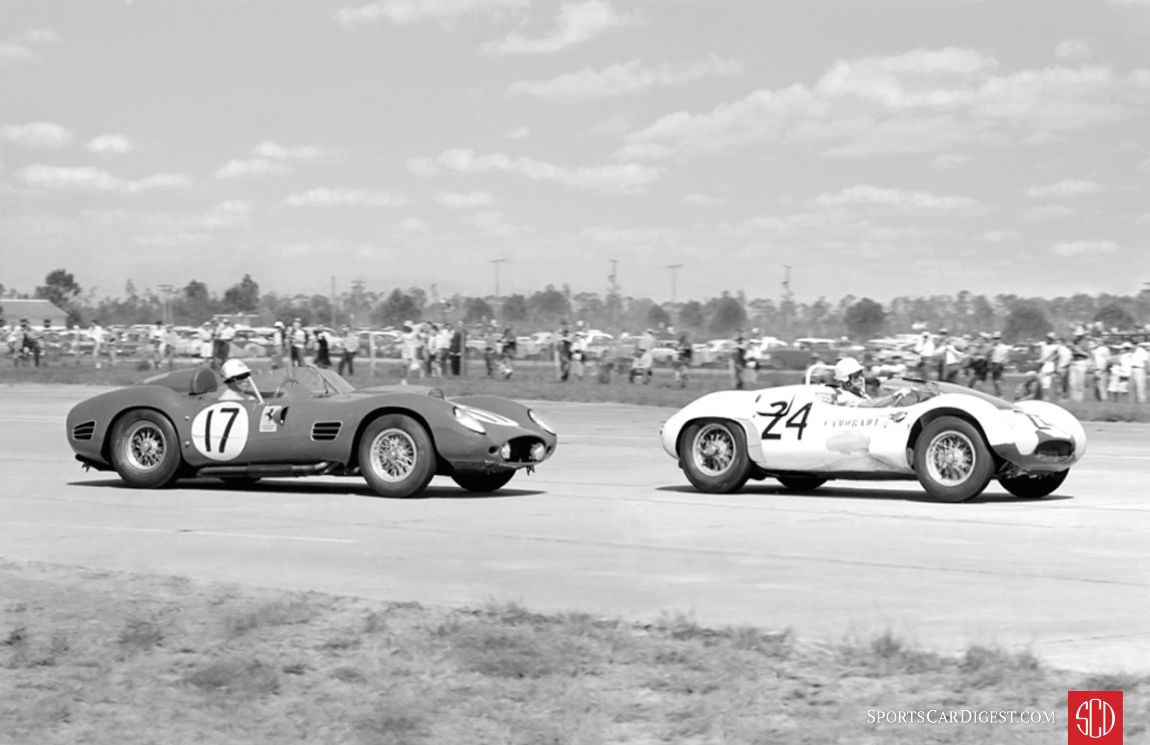

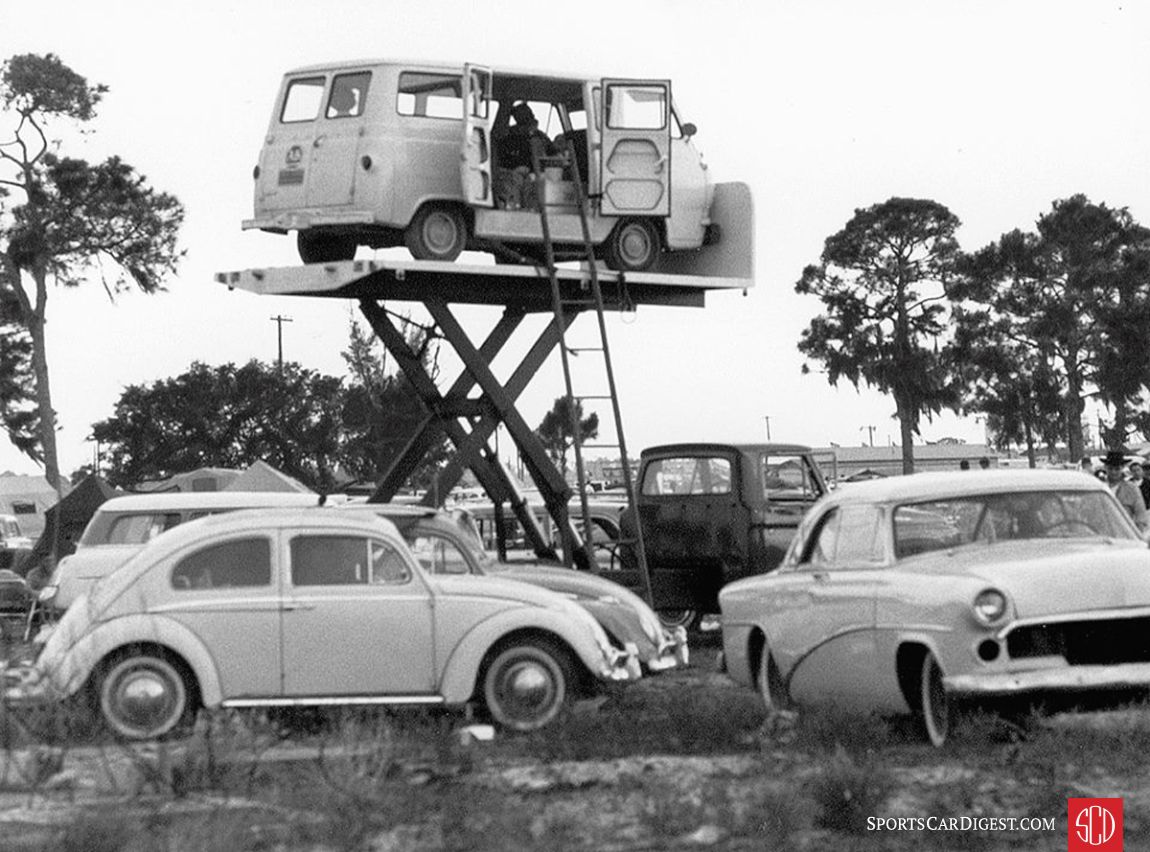
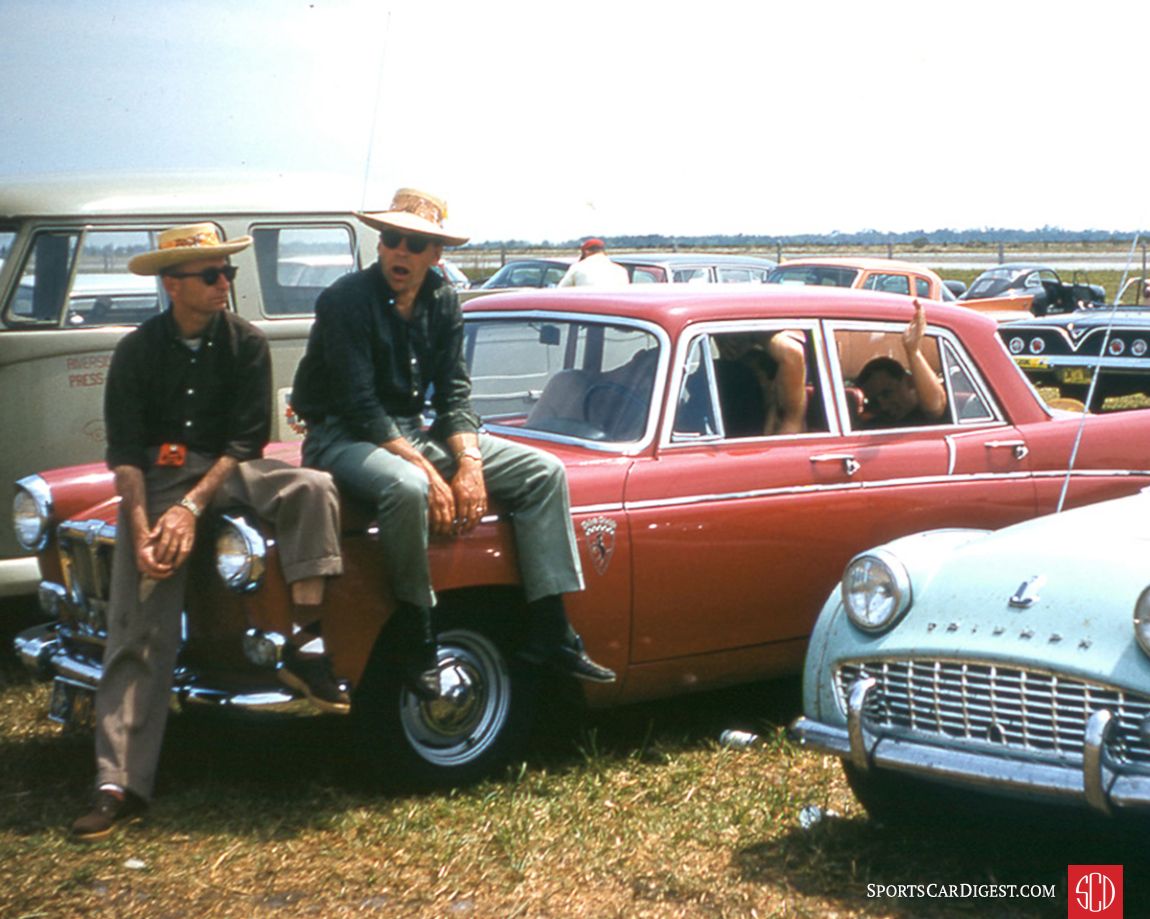
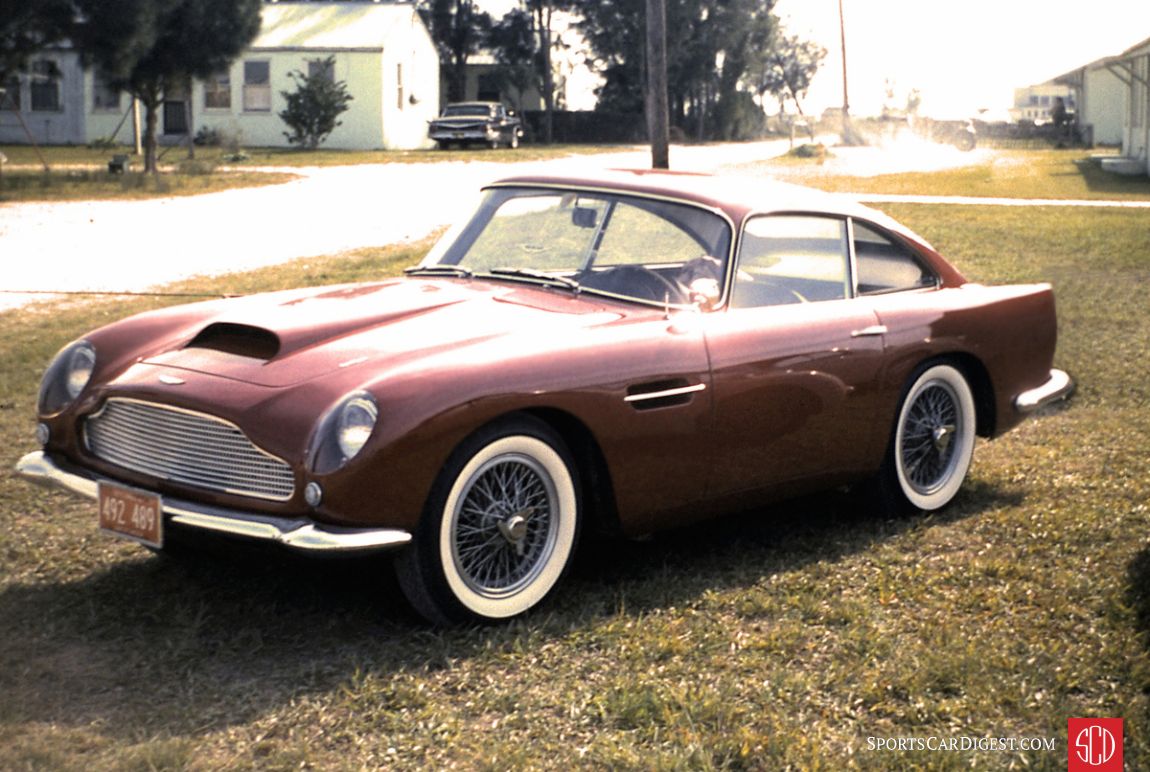
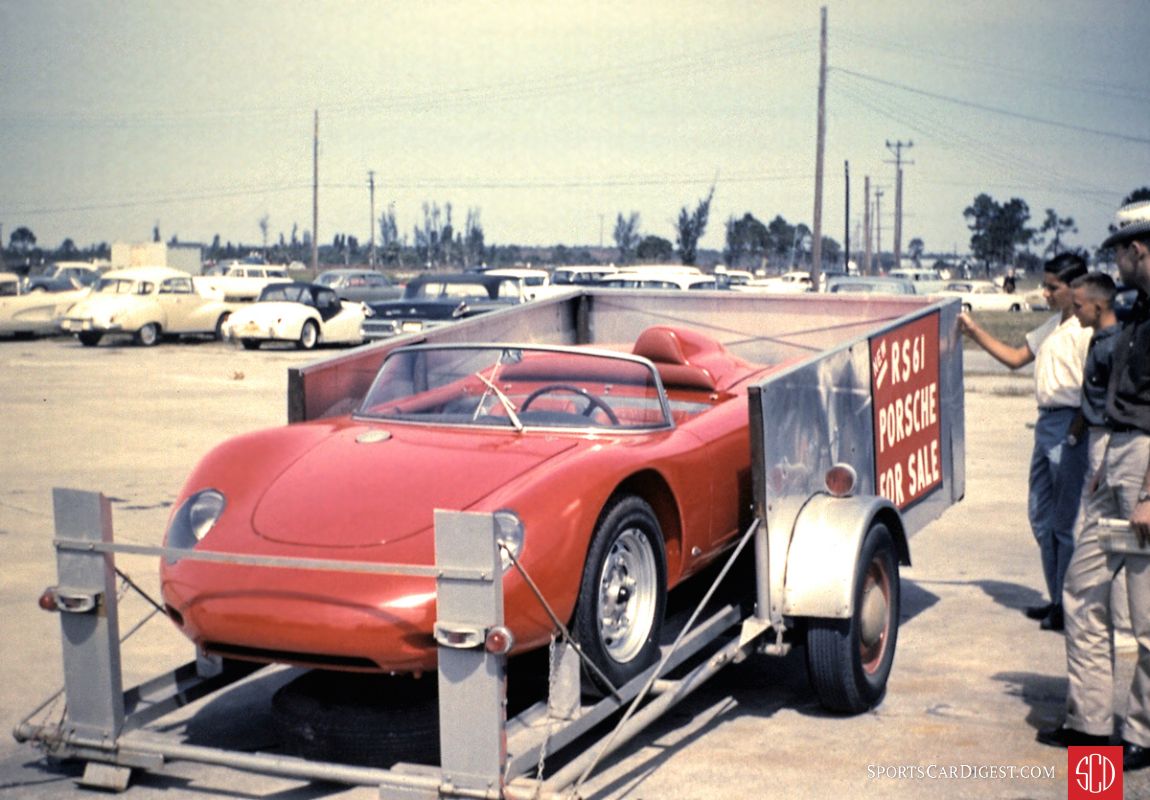
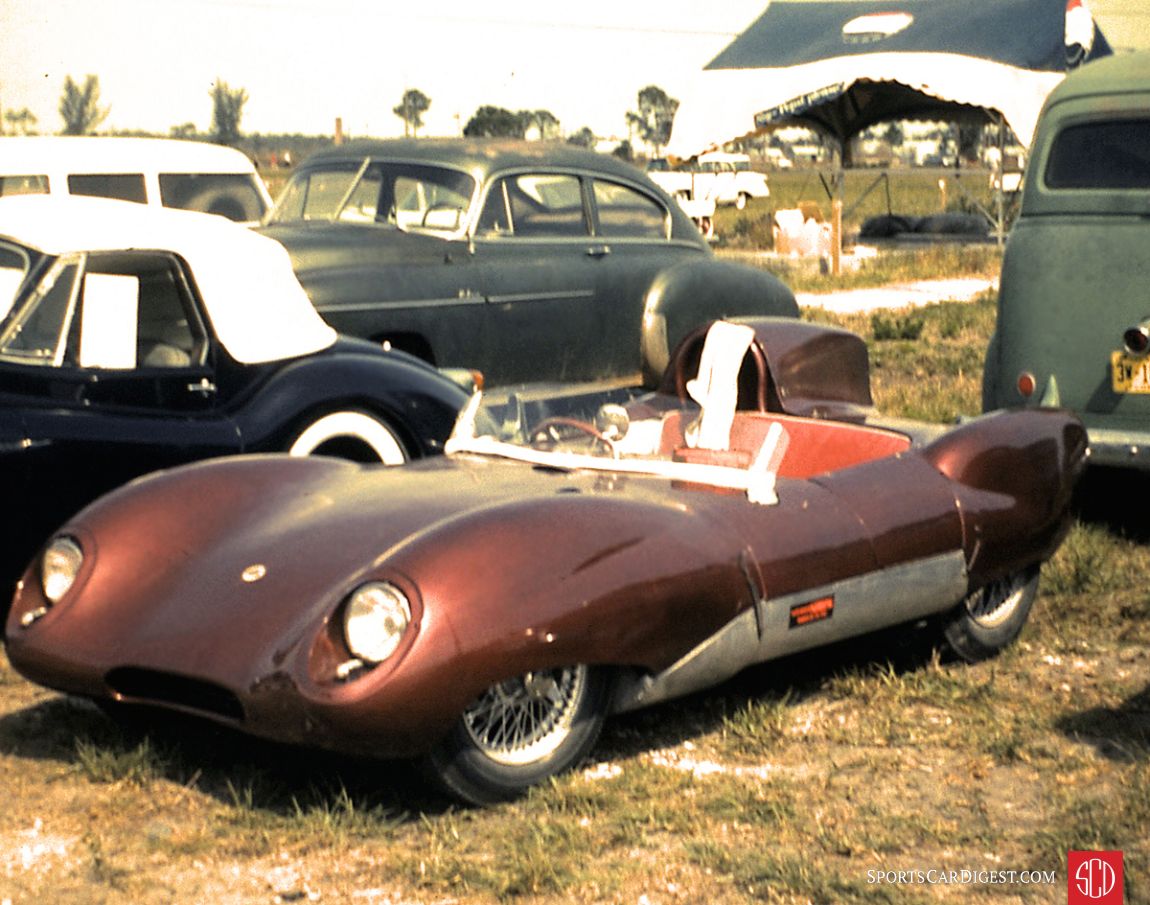
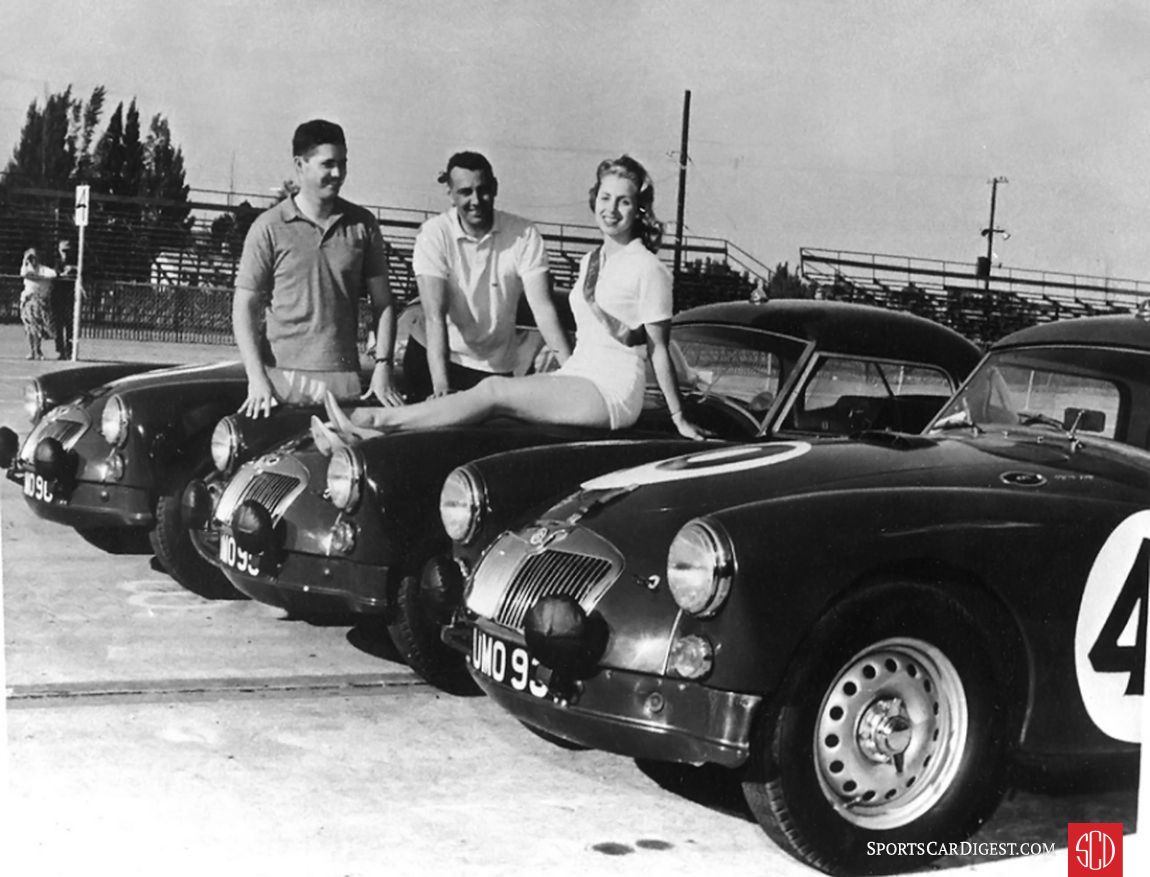
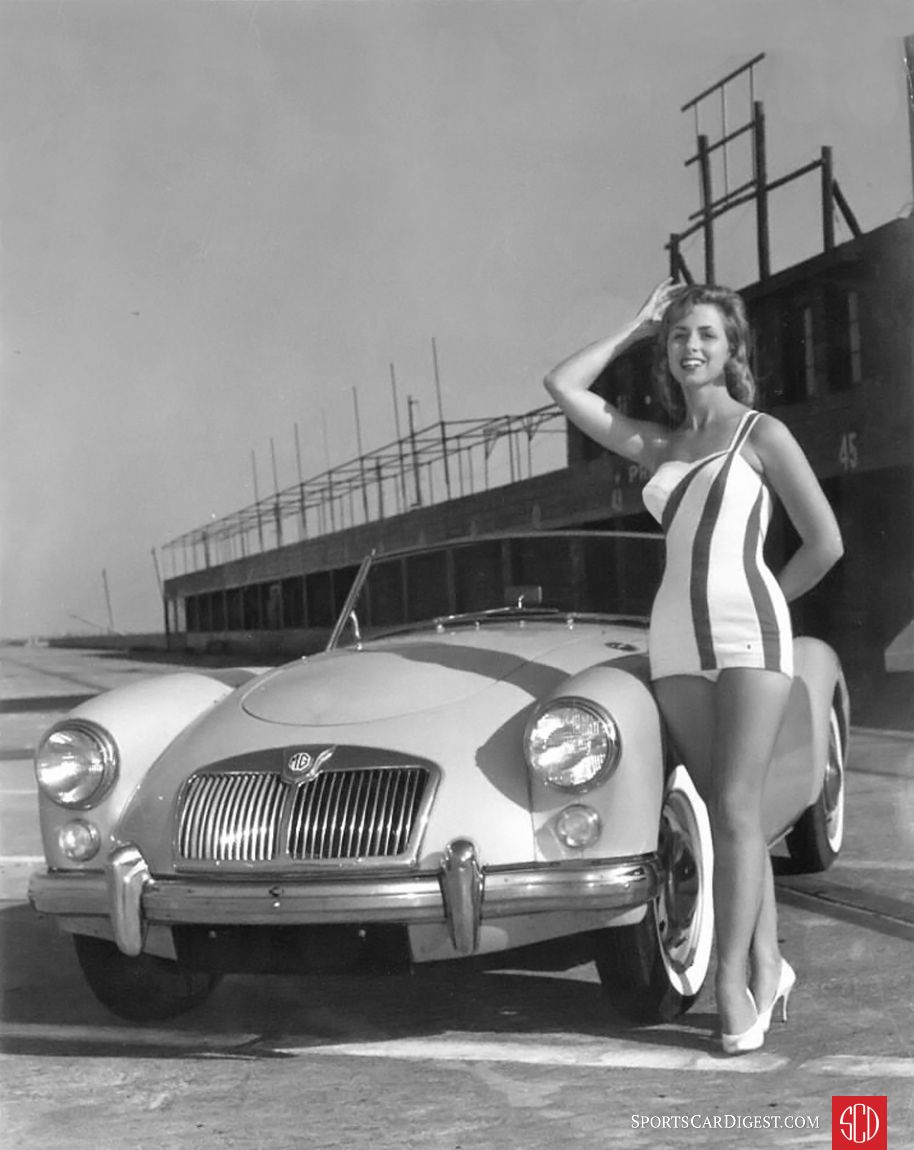
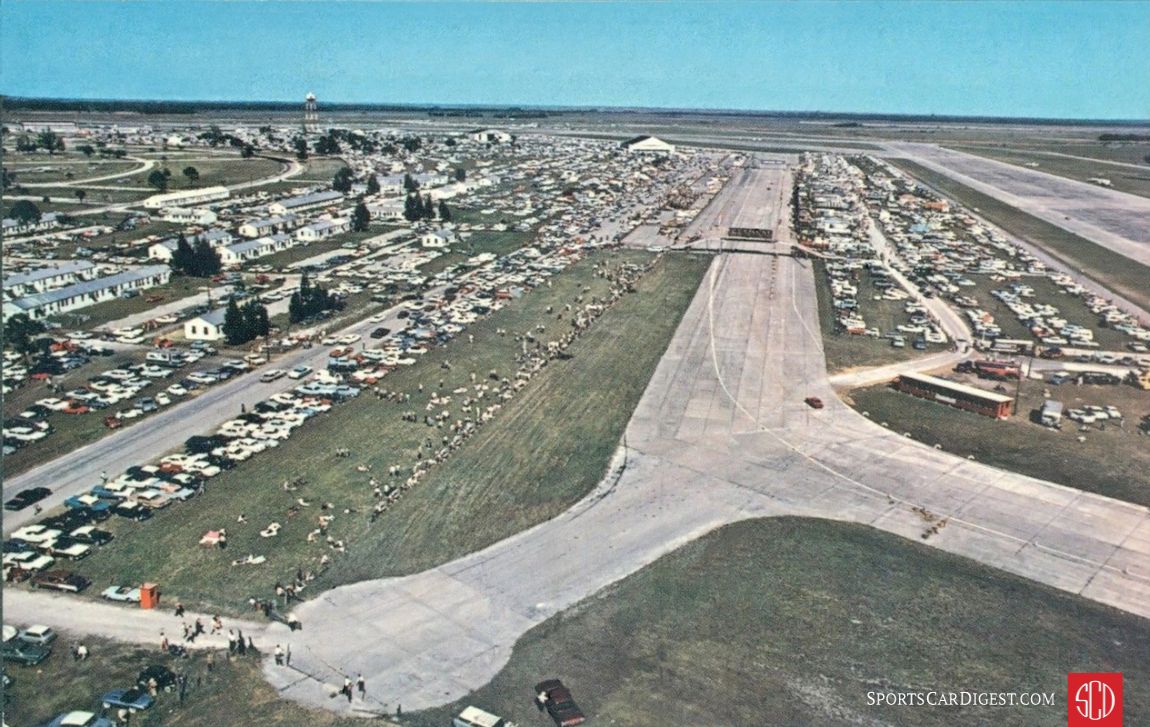
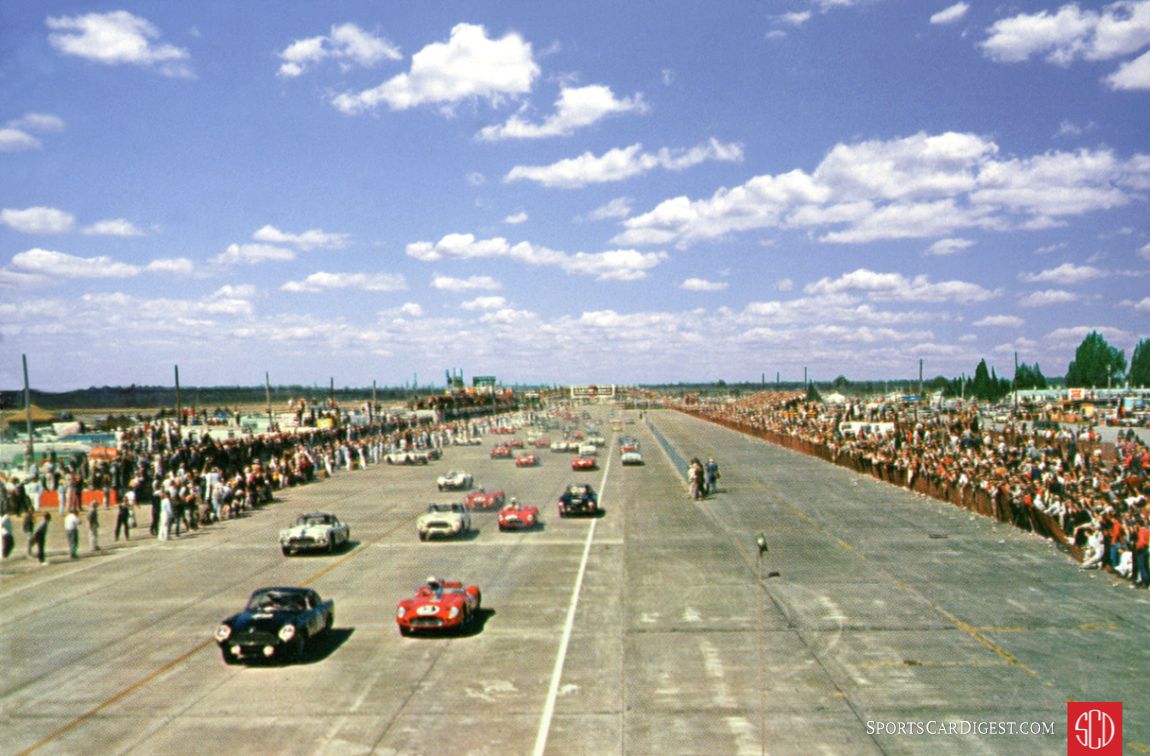

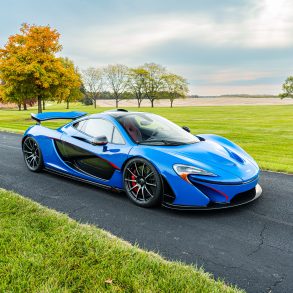
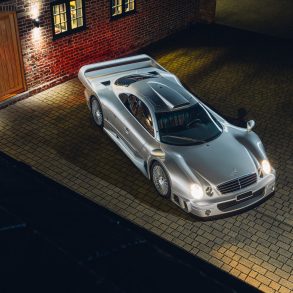
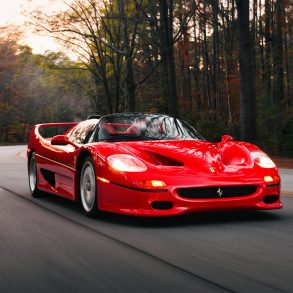
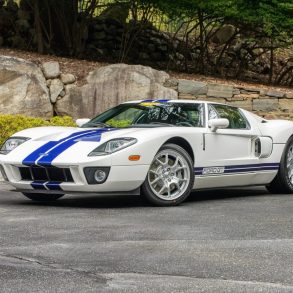


Thank you a great read in to the history of 1961. It bought back memories I have of the Springbok series in South Africa and Rhodesia when I was a young lad. I would get excited weeks before the event as you would see the trickle of internationals cars and teams arrive and set up in local garages. In those days you would see ferraris, Lola’s and others on open trailers out side hotels over night. Try to imagine that happening to day!
What a great early Christmas present from Mr. Galanos and the team at Sports Car Digest. Thanks for this excellent read, so wonderfully paired with images that stir the heart. Thanks to all.
Loved the story, and the pictures. Thanks for printing such wonderful material.
Another great Louie Galanos gem. Great photos to illustrate his detailed research and stories. You can get a lot of photos of east coast races from Lime Rock to Sebring at barcboys.com. As Galanos said, 1961 was a fantastic year. I was there and his story brought back many a memory. Can’t wait for more.
masterful work. thank you for another great look at a moment of history with beautiful people and automobiles.
Another extremely insightful Sebring story from Lou with many little known details supplemented with great BARC Boys and Florida Archive photos.
As a former SAAB racer loved the photo of the SAAB on the track and mention that they were the “Official” track cars for the race (front wheel drive though not four wheel drive).
Would like to see all of Lou’s Sebring articles in a book some day.
Lou – you’ve done the calendar, and the calls keep coming for the book. How many treasures remain to see print? Thanks for these historical views of sports car racing in Florida – masterful. Doug Seeley
Great, again, thank you so very much for this incredible account Lou!
Thanks for sharing this wonderful story and those great photos. I’m honored to have met both you and Dave N. (BARC Boy) – when you share your stories it is like touching history. I spied one pair of Suixtil pants, of course in one of Dave’s photos. Randy has a great idea, a book of all Lou’s stories!
thank you for such and an excellent article and photos..
Enjoyed another excellent article with some interesting insights. Thanks.
Remarkable pictures of a, sadly, bygone era. Many thanks!
Fabulous photos and a great story. Here in the Uk we don’t hear enough about the great days of Sebring. Thanks.
What a terrific recount. You really brought it home! Thank you!
Another fantastic and detailed Florida racing story with lots of great (now us old farts must admit “historic”) photos.
Thanks Lou.
We BARC Boys had a great time there in ’61. Thanks for bringing that fantastic week back to life.
Excellent Excellent Excellent ! Much is written about LeMans and Indy but back in the 50’s and 60’s Sebring had that special mix of ingredients that was magnetic. Old southern charm,warmth, extremely talented drivers from around the world and an unbelievable array of manufacturers ! Did I mention the girls ?
Blast from the past, having grown up in a racing car family, my uncle Rafael Rosales from San Juan Puerto Rico entered several of these races, ended up co-piloting with Strirling Moss at LeMans in 1962 and 63 with a DNF and a 5th place. Great memories and excellent photos, still a huge fan and vintage BMC collector.
Thank you
Outstanding article. Thank you for bringing back great memories with so much detail.
Mister we could use a man
Like Alec Hulman again.
(Hat tip to Archie Bunker)
Thanks Alec and I appreciate the praise especially from you. Your father was a very special man who not only founded Sebring but contributed greatly to the
golden age of endurance racing in America.
Dear Alec, As a student at Princeton in about 1965, I had the pleasure on one occasion of hearing your father speak to a small, informal group of us young sportscar enthusiasts in a small classroom one evening. It was an extremely exciting experience for us! In 1970, while serving as a timer in the pits of #30 Ford GT40, I saw that fine gentleman from a distance. Years later, in 1986 I attended his funeral in Brick Church on Park Avenue, and, as sad an occasion as that was, I was fascinated to recognize in the congregation a number of greats from the world of racing paying their respects, including Luigi Chinetti and the Dreyfus brothers, Rene and Maurice.
I was there as a student. A wonderful recounting of all that I saw and that which I missed. What wonderful times!
Thank you, Mr. Galanos for this wonderful story with so many interesting details that bring back those golden years of racing.
Another great retelling of an epic vintage racing event. If only to invent a time machine and go back to see it first hand. This is the next best thing available. Love the photos.
Thanks for reminding me of what was the best time for racing (except for the awful lack of safety equipment).
Today it is too corporate and far too aero dependent. Not to mention expensive.
I had not seen the picture of the AC Bristol my father, James, flipped in the race. He should have stuck with the Ferrari he raced the year before!
Dixon Johnston
Good evening Louis,
Very good story and narration, thank you very much for bringing insight and details from those great racing times !
You mention one of the races previous to the 12 Hours of 1961, and you made a comment on a race driver who raced on the Formula Junior race, named Lollobrigida, who some claimed was a cousin of Gina Lollobrigida.
In fact, he really was cousin to Gina. !
He lived and raced In Venezuela for many years, before moving back to Italy. He made and directed several movies in Venezuela.
We have a spanish forum of Races in Venezuela, where we have a thread about him, and there is one photo of him with the Stanguellini:
http://www.pasionalavelocidad.com/foro/viewtopic.php?f=18&t=223&p=9337&hilit=guido#p9337
(Hope you can access the forum, we are having some problems on this last week)
Unfortunately, he passed away recently on January 2014, I am sure he would have been very happy of your mention of him.
Best Regards,
Eduardo Muñoz
Thank you for the great details and fine photos. To these 2015 eyes, the Ferrari Dino 246 SP was anything but “ugly” as described in a 1961 magazine article.
Regarding one of the comments — well-meaning, no doubt — “Southern charm” in 1961 was great for some but horrible for others because of racial segregation. Just as we should remember our racing history, we should also keep the lessons of our social history in mind.
Louis I always enjoy your postings, the photos and stories are outstanding. Thanx for posting this great account of the ’61 race. “Race” doesn’t really seem like a big enough word to describe what Sebring is all about. Sixty one was supposed to be my first time there but I couldn’t put it together. Now because of you I feel like I really was there. I did make it in ’62 and from that time on have only missed a few. I live in Sebring now so no excuses for missing an event.
Louis:
I remember the bad smell past turn one. It was not a pet food factory. It was a scew worm sterile male breeding operation. See http://www.fao.org/docrep/u4220t/u4220T0a.htm
”
A new rearing facility was constructed near Sebring, Florida and initiated operations in July 1958. Within three months the weekly production of sterile flies from this new facility was in excess of 50 million per week, with an average of 50 to 75 million per week for the duration of the eradication programme (Smith, 1960). Sterile flies were packaged in boxes, with 400 flies per box, which were dispersed at the rate of 76 to 304 sterile flies per square kilometre from single-engine planes flying about 500 m above the terrain. Planes flew over treatment areas in Florida, southern Georgia and southern Alabama each week on 3.2 km-wide swaths on a grid pattern.”
My fellow classmates and I were heading south from Northern NJ to Fort Lauderdale to become part of the trouble that would eventually happen that year. Someone got the bright idea of stopping off for some kind of sports car race in a town on rt 27 called Sebring which just happened to be in the direction we were heading. It was at this event that one eighteen year old clueless young man became hopelessly addicted for life on the extraordinary world of endurance racing. To say the world’s best pictures do not do this race justice is an understatement only appreciated by those luckily enough to have been in attendance on that day in March 1961. It’s so true, those years, regardless of money or technology, cannot replicate the originality and naked drama from a time given to almost zero technology and low budget entries. It truly was the age of the unpretentious driver and his crudely assembled machine racing on casually designed tracks with safety as an afterthought.
Thank you Robert for those well written and eloquent words from someone who was there. Happy Holidays to all who have commented on my story.
Thank You Louis. You’ve taken me to another race. I could see it, hear it, even smell racing fuel and wood fires. In my opinion, you have become the preeminent writer of what to many of us were the Golden years of competition. I could feel the political setup and each stage of the race. I’ve read twice now. Lifelong associations like Bob Holbert and Roger Penske, the emergence of the Rodriquez brothers. The freedom of engineering development that led to so many variations on the grid. Your stories expand my horizon of Motorsports and Sebring and again, I thank you and Sports Car Digest for that.
Thanks Burt and thanks for all the help you and your late brother gave me for several stories I have had published in Sports Car Digest. Merry Christmas.
What a wonderful Christmas gift to receive early, early this Xmas morning while doing a nostalgic perusal of the web seaching for info about the Sebring races. Something reminded me of my dream car (1959 Ferrari 250 GT California) which then led to thinking about the great time I had as a high school senior at the 1972 race, and I was just reminiscing with a big smile on my face seeing Mario Andretti’s Ferrari again! I couldn’t turn off my tablet to hit the sack!
Thank you so much, Mr. Galanos, for this fascinating and exhaustive report on one of the earlier race days at Sebring. Outstanding!
Merry Christmas.
Wonderful photographs. Those tall windscreens had been imposed by the FIA, and the drivers hated them because they could not see through them, due to the reflections, scratches etc. and they they tried to sit higher so they could see over the top of them. An other great FIA idea|
Louis: What a great story/pictures of the events at Sebring. You make one feel that you are there in the “golden Age of racing” and the great names of the time. Even the pictures of the fans cars bring back memories. Keep up the great work.
Jim Beebe Dec 28, 2015
Louis: Thanks for another great story showing the talent of the Rodriguez brothers, I wonder where did you get the comment of Don Pedro Rodriguez celebrating at the local bar, but it was absolutely true (and a common practice by Don Pedro). He was another remarkable person behind the scenes supporting Pedro and Ricardo at all times.
And for the records, Pedro’s female friend on one of your pictures is Angelina Dammy de Rodriguez, Pedro’s wife.
Enjoyed the history lesson and the pictures as usual. Thanks Lou.
Great stuff, Louis! One day you must compile all of your work into a single volume…. I’d buy it in a millisecond…
Thanks Corey, I have also had that idea in the back of my mind. Unfortunately books today generally don’t sell well and as a result many bookstores have closed. If I publish it will have to be self-published and I am not sure if I am ready for that.
Thank you Louis: I notice that you are a fellow Floridian. My late brother George and I came over from Ft. Lauderdale with a couple of friends for that race, and the next four after that. It was the first any of us had ever attended. I was a half-crazed sports car nut, starting in 1957 when I spent the day with a pile of Road & Track magazines found on a family visit to my uncle’s home in Ohio. I especially remember the front-engine Ferarri TRs, watching them for hours howling down the pit straight in the early evening. The bizarre Maserati T63 was…well, fascinating. I also fell in love with Porsche Spyders. I was fired up, seeing my fantasy cars with motion and sound after only being able to read about them for so long. Years later, I serially owned four ’60s V12 Ferraris (and raced one!), a 1957 Porsche 550A, a Formula 1 Brabham BT-26A that I watched finish 2nd to David Hobbs at the Sebring Continental in December 1969; and some other race cars of that ilk that I drove in vintage races. Wish I still had them, but I sure enjoyed living my dreams.
I’m looking for materials for the 1961 Sebring 4 Hour race,particularly photos and other information of Abarth 1000 who participated in this race. Because I own the same type of Abarth 1000, which is totally unknown, but it may be one of the cars in this race.